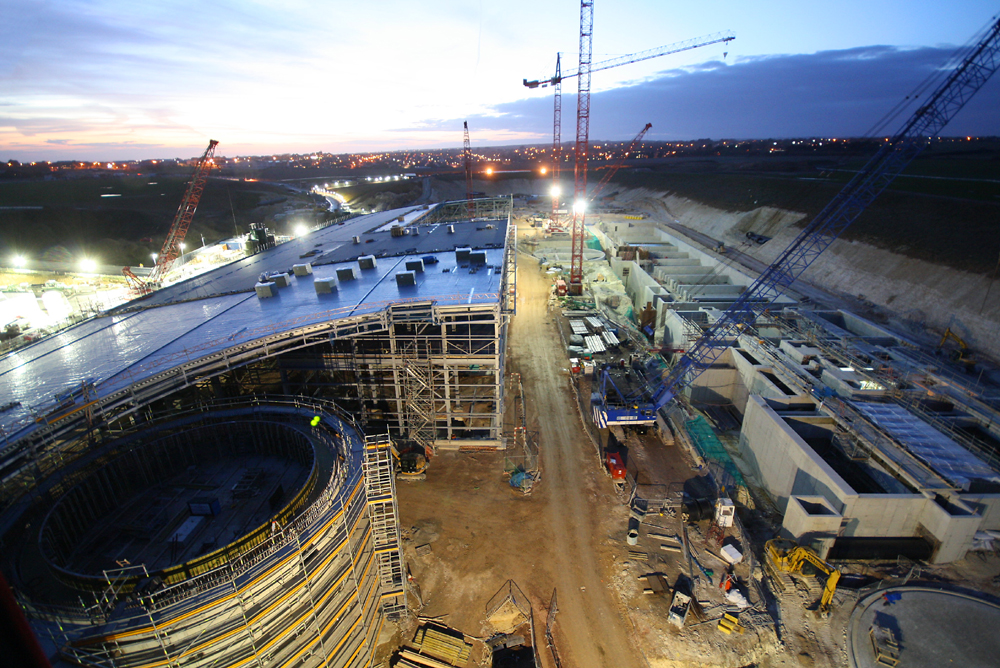£300million Environment Project Hits Targets

20 May 2011
The £300million environmental improvement scheme bringing cleaner seas to Sussex has now delivered several of its major milestones, through a combination of advanced project controls and inventive production techniques, which ensure the project remains on track and potential risks are reduced.
The project is now approaching the halfway mark, says Chief Engineer on the scheme, Clive Glasspool. The scheme involves constructing 11km of tunnels to take wastewater, via underground pumping stations, to a new wastewater treatment plant at Peacehaven.
“We’ve excavated and deposited over 250,000m³ of chalk at the main wastewater treatment works site, completed 25,000m³ of reinforced concrete and installed 3,000 tonnes of structural steelwork to the treatment buildings,” says Glasspool. The buildings’ green roof, designed to blend the building in with the downland landscape, is presently being installed and covers an area equivalent to almost three football pitches.
“In addition, more than 80 per cent of the tunnelling, as well as all the pumping station shafts, each 17m in diameter and a maximum depth of 45m, have now been completed.”
Due to its size and complexity the project programme has been developed in a web-based environment. This arrangement, part of a 4Delivery business collaboration system, also allows for the consistent monthly reporting on each of the 18 sub-projects, with data automatically taken from the programme and its baseline. “Access is provided for the client to get the same information that we are using ourselves and a true collaborative approach is being achieved,” adds Glasspool.
A further significant step in the project has been the linking of risks to the programme and analysing their impacts using risk analysis software. This not only identifies the required time risk allowance for the project as a whole, but also for the individual sub-projects and indicates which risks have the greatest potential impact on the project, allowing the team to implement appropriate mitigation measures.
“The most important step is getting the programme and risks understood and owned by those performing the tasks. To do this, we’re using ‘last planner’ collaborative techniques to bring together all parties on the project to identify constraints and opportunities, especially those in the supply chain,” explains Glasspool.
“I’ve spoken to major members of our supply chain who have commented that it’s invaluable in avoiding clashes and identifying needs well ahead of time. This means that everything is in place when the supplier turns up and all the previous tasks leading up to the new operation are complete. It’s too easy to miss one item that has an impact on the efficiency of the task or unnecessarily provide something twice.
“Furthermore, health and safety issues can be managed out of the process when the detail is explored to this level.
“It makes everything run more smoothly. On this project in particular, there are numerous complicated interfaces that become manageable with this approach. It provides an enormous amount of confidence when you start an operation knowing everything is in place.
“The next major milestone will be completion of the tunnels in June. This, and the recently commenced M&E installation, are now the key activities that will allow us to achieve the significant milestone of bringing the wastewater from the catchment area into the works to start the commissioning process at the end of this year. When operational, the system will be able to handle a flow of more than 2,500 litres per second.
“It’s been challenging, but all the challenges have been successfully met and we’re on line to achieve our takeover dates.”
Ends
